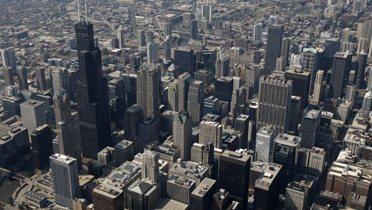One year ago, Brookings experts wrote a series of 12 memos to the incoming president on the most pressing policy issues facing the country. Now they assess the administration’s progress on those issues in The Status Report, a daily series of commentary with video to be featured in POLITICO’s Arena. Bruce Katz and Robert Puentes give the president and his administration an A- for boosting infrastructure spending and for initiating policy reforms and innovations in the first year. On the bigger effort to rebuild American prosperity, however, they feel that the work is, thus far, incomplete.
Investing in the Nation’s Infrastructure: A-
Last January we urged the new administration to focus on infrastructure investments that will stabilize and strengthen our economy beyond the current crisis. Smart investments in infrastructure, we argued, can generate productive, sustainable and inclusive growth. We called for a strategy of “invest and reform” to ensure that infrastructure investments were driven by market logic, factual evidence, and performance rather than the greatest short-term political reward.
We recommended a range of funding and finance vehicles, such as a national infrastructure bank, to target those infrastructure projects (from road and rails to ports and pipes) that have the highest return on investment. We offered a re-imagined partnership with states and localities and the use of market mechanisms and pricing to deliver better outcomes. To better align these efforts we advocated for better coordination among the myriad agencies that construct, use, maintain and operate under this broad umbrella of “infrastructure.”
Without a doubt, the administration had its hands full from the outset. The real concerns about the condition and quality of our infrastructure and the serious funding and financing shortfalls quickly manifested themselves at the same time the president and his team worked to staunch the bleeding from a rapidly deteriorating economy.
What followed—the American Recovery and Reinvestment Act (ARRA)—was the most important and visible infrastructure policy effort of the past year and reflected a belief that infrastructure investment could provide both short-term jobs and long-term growth. Our early and ongoing assessments of ARRA found that the law usefully directed billions of dollars toward infrastructure. In fact, we estimate that, excluding the tax cuts, about a quarter of the total recovery package is directed toward infrastructure.
Unfortunately, the need for fast action meant the nation had to rely on existing “business-as-usual” delivery systems. As a result it thwarted any conversation about real reform and reinforced the approach of spreading money around instead of targeting investments. The administration’s one spatial directive of investing in so-called economically distressed areas only made a bad situation worse.
The good news is that we saw a step change in investment in new and efficient areas of green infrastructure. This includes $4.5 billion to modernize the nation’s electric grid, $7.2 billion to accelerate broadband deployment in unserved and underserved areas, and $8 billion to jump start a new high speed rail network.
For the so-called gray infrastructure—including the $27.6 billion for roads and bridges—the focus on shovel-ready projects to create jobs has produced uneven and opaque results so far. But by creating this one measure of performance and by emphasizing transparency in spending there is potential to reveal the myriad channels through which the federal government delivers funds, and the biases in how states allocate them.
Several key items are still works-in-progress. The administration’s efforts to re-imagine federalism through competitive programs, partnerships and challenge grants are ongoing. These new programs, while relatively small, could usher in a new way of planning and coordinating infrastructure projects by basing decisions on empirics rather than doling out money through entitlement formulas. A new discretionary transportation program applies quantitative economic criteria, such as job creation, as a metric for evaluating applications. Others reward collaboration and partnerships. An unprecedented partnership between HUD, EPA, and DOT will act as a foundation for interagency coordination heretofore considered an unnatural act for federal departments. These efforts truly do represent the sort of transformative policymaking that will help transition to the next American economy.
There are also major legislative challenges that still loom large for 2010, including the potential for a second stimulus, the reauthorization of the federal transportation law, and the creation of a national infrastructure bank (which the President himself promoted at the jobs summit in December). The related debate about climate change legislation will also have infrastructure impacts that stem from the Obama administration’s first year.
Post-health care 2010 will prove critical for the Obama administration to demonstrate the kind of impressive leadership exhibited by our global competitors on infrastructure. Past U.S. presidents ceded infrastructure policy to Congress, which naturally led to multiple programs in search of a strategy. We need the opposite approach now given the fiscal constraints we’re operating under and the broader economic and environmental imperatives we face today.
The Brookings Institution is committed to quality, independence, and impact.
We are supported by a diverse array of funders. In line with our values and policies, each Brookings publication represents the sole views of its author(s).





Commentary
The Status Report: Obama’s Plans to Rebuild American Prosperity
January 15, 2010